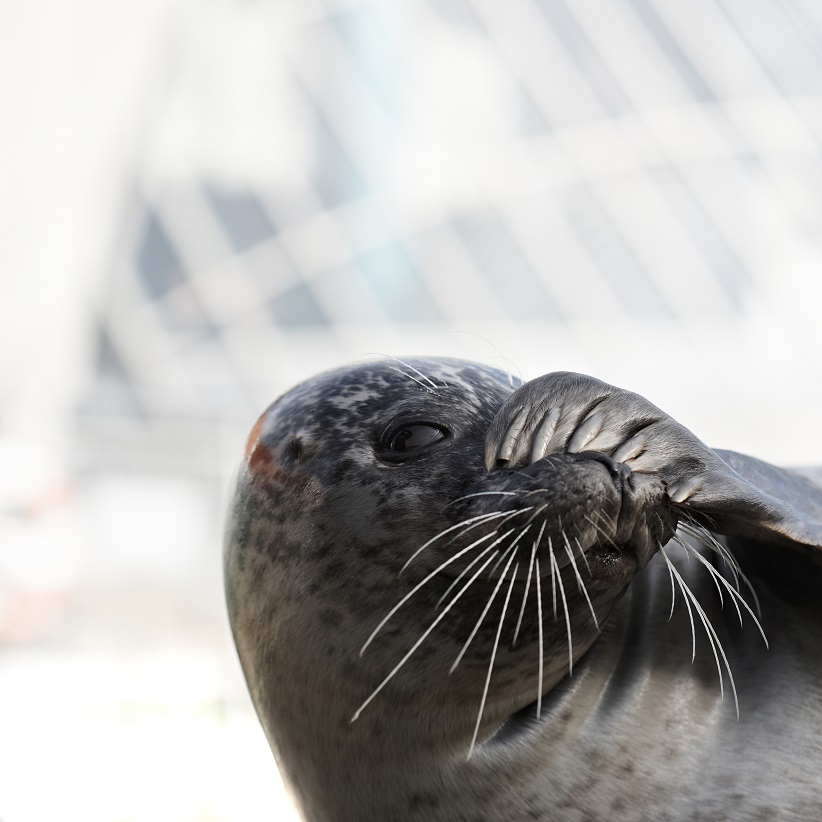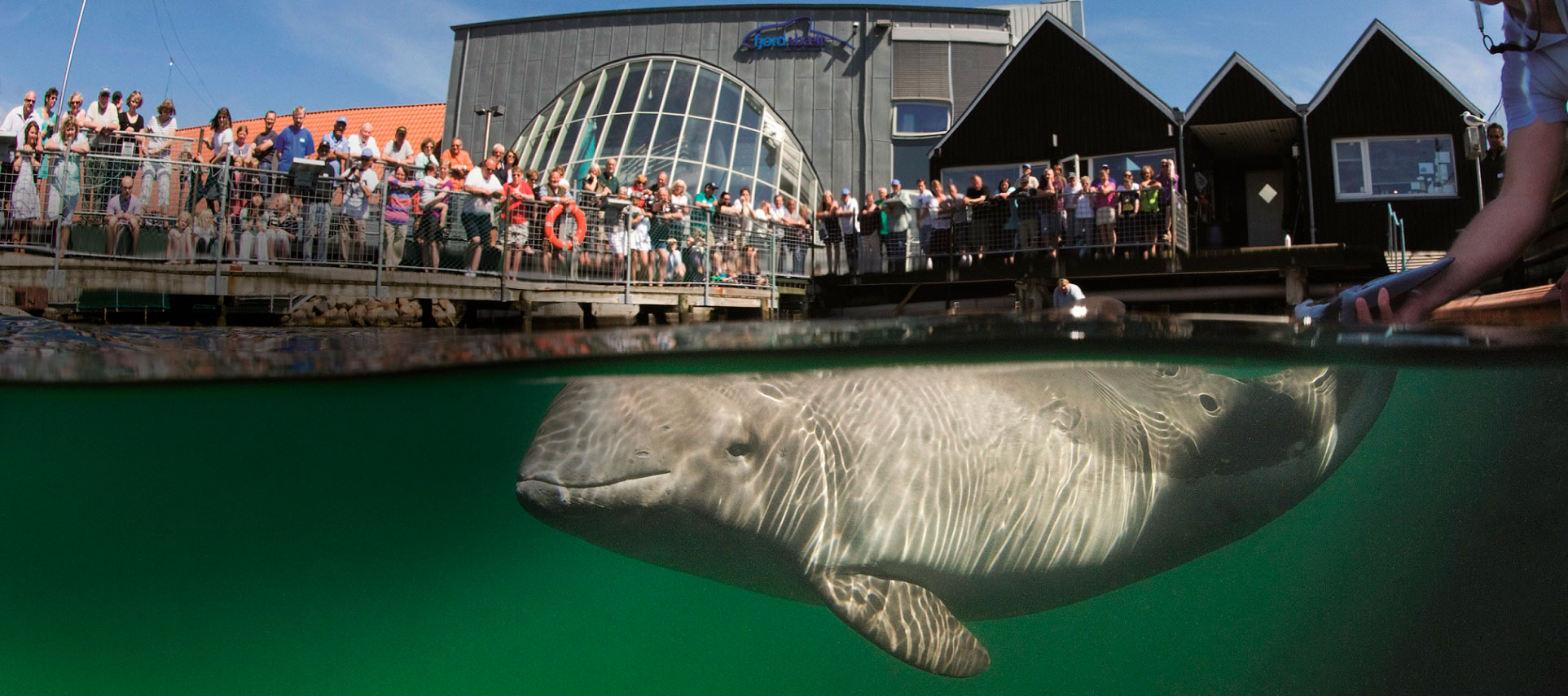
Research - English version
On this page you will find more information on how porpoises aid biologists in protecting marine animals.

Research
The porpoises at Fjord&Bælt are trained to work voluntarily in various research projects. The animals are trained through the positive reinforcement method. That is, they are rewarded if they do the right thing, but if they do something incorrectly, the reward fails to appear, and they try again. The animals are never punished - neither verbally nor physically. The animal trainers are instructed to work in such a way that the animals can take part in the various projects in a responsible manner.
The research gives us knowledge about the porpoise's growth, age, body condition and behaviour. And the various data collected are used to develop methods for research on porpoises in the wild.
The guests at Fjord&Bælt have the opportunity to follow the research when the coaches give presentations where they talk about their work. And Fjord&Bælt's staff are always available for questions about the wildlife found below sea level.
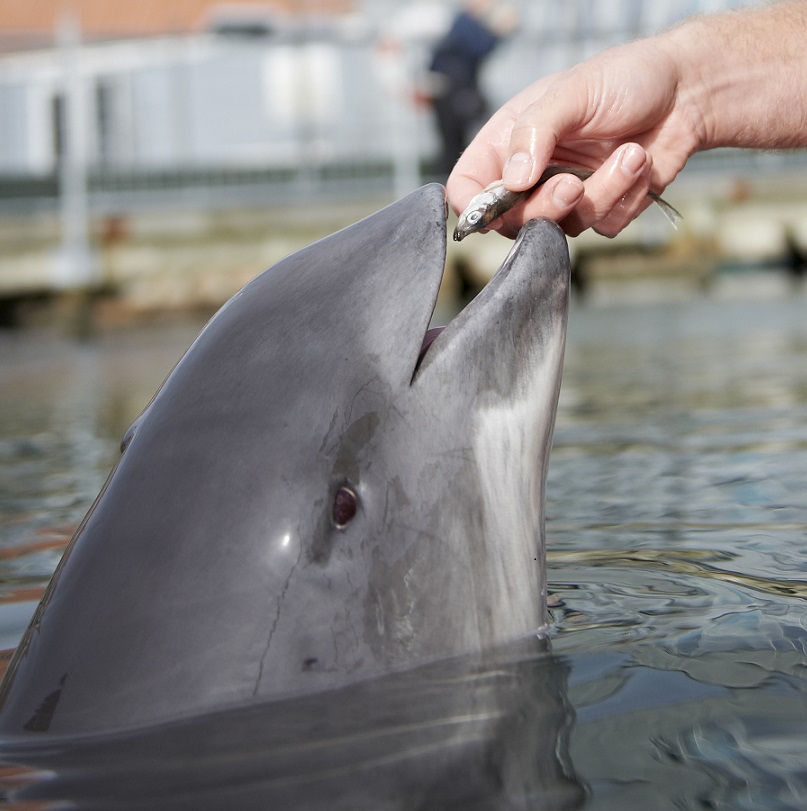
The porpoise
The porpoise is the only toothed whale that breeds in Danish waters. It is a cousin of the dolphin but has a different set of behaviours (for example, it is shyer).
Whales, like human beings, are mammals that breathe with lungs. They give birth to live calves, and although the porpoise both gives birth to its calves and lives its whole life underwater, it must periodically rise to the surface and draw air. Its breathing hole, which is similar to our nose, sits on top of its head, so it does not have to stick its whole head out of the water to take in air.
Although porpoises are very common in Danish waters, not much is actually known about these small whales. Therefore, Fjord&Bælt has received permission from the Danish Environmental Protection Agency to keep up to four porpoises and train them so that they can actively participate in the research work.
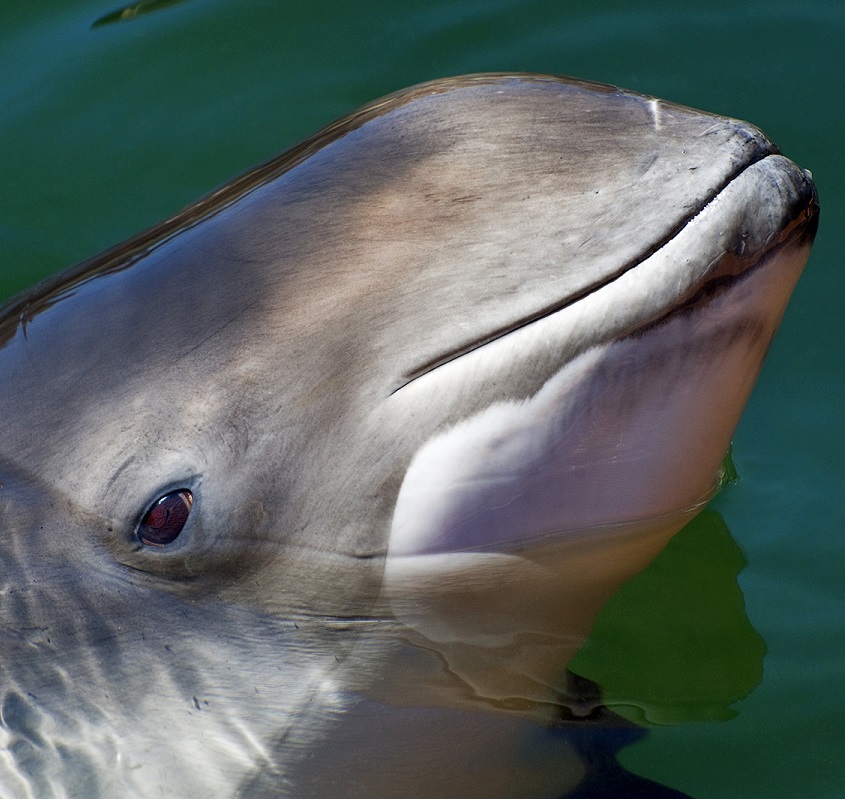
Porpoises at Fjord&Bælt
Today there are 3 porpoises at Fjord&Bælt. Freja is approximately 25 years old, and the other two porpoises, Saga and Eskild, arrived in 2020 and are each approximately 1 year old. Porpoises have an average life expectancy of about 6-12 years in the wild. So there are reasons to believe in a generational change in the foreseeable future. Saga and Eskild are already in training now, so they will be able to be part of the team in line with Freja.
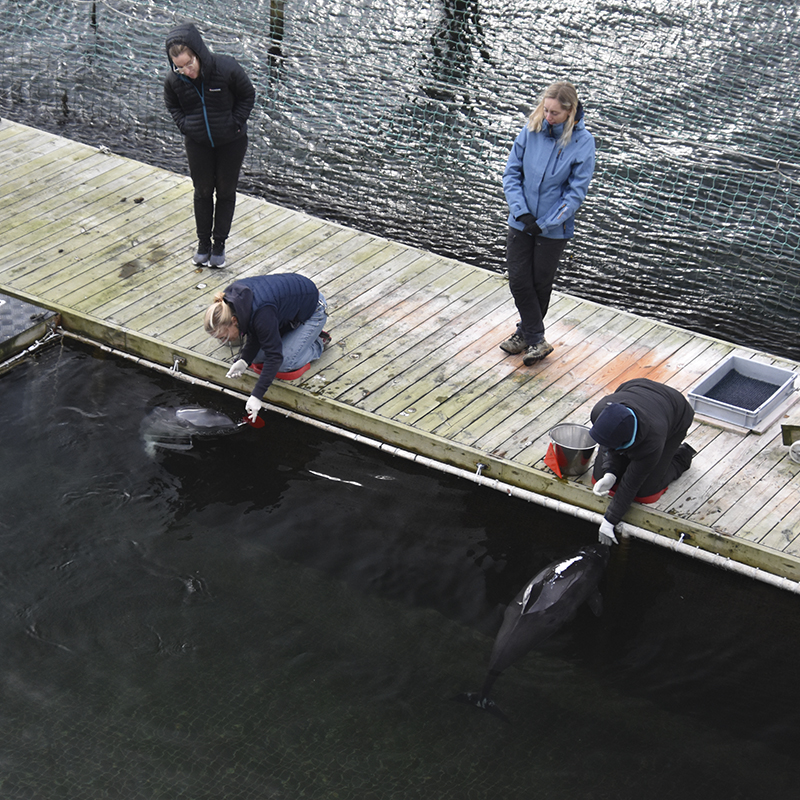
Catching prey
The porpoise is sent back and forth in Fjord&Bælt's sea pen, depending on where a fish is thrown into the water. The experiments are performed both with and without special soft cup blinders attached around their eyes to study the significance of vision and echolocation in catching their prey.
Through these studies, a detailed understanding of how porpoises use and regulate sounds during the prey capture sequences has been obtained. It is the first time details of this kind have been documented concerning the whales' hunting behaviours. The results can be used to better understand how porpoises catch prey and, hopefully, how to avoid getting them caught in fishing nets while they hunt.
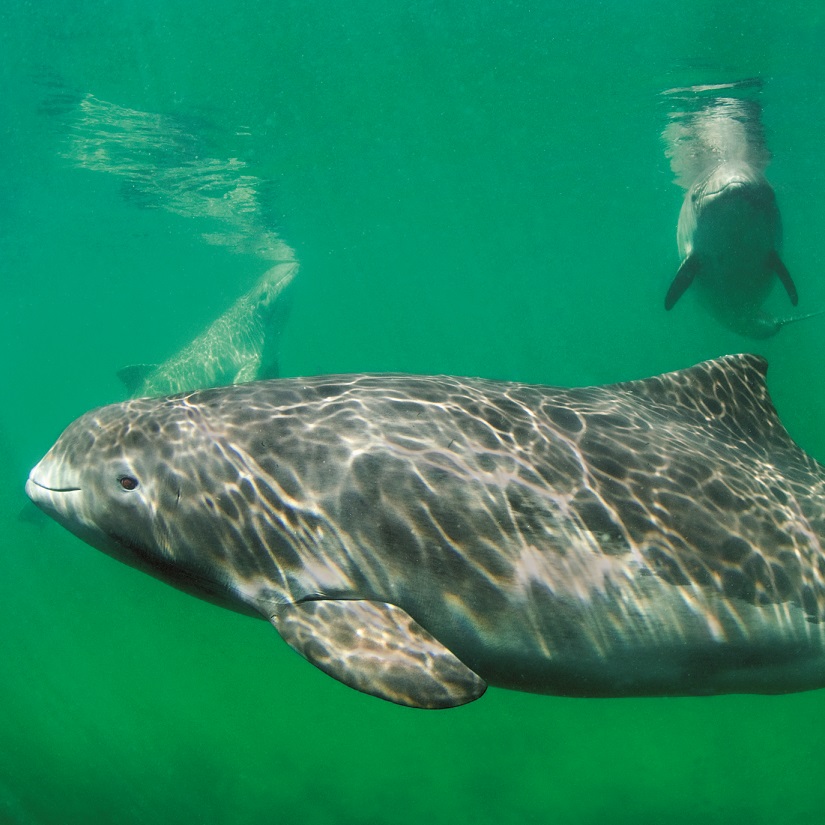
Porpoise hearing - impact from man-made noise
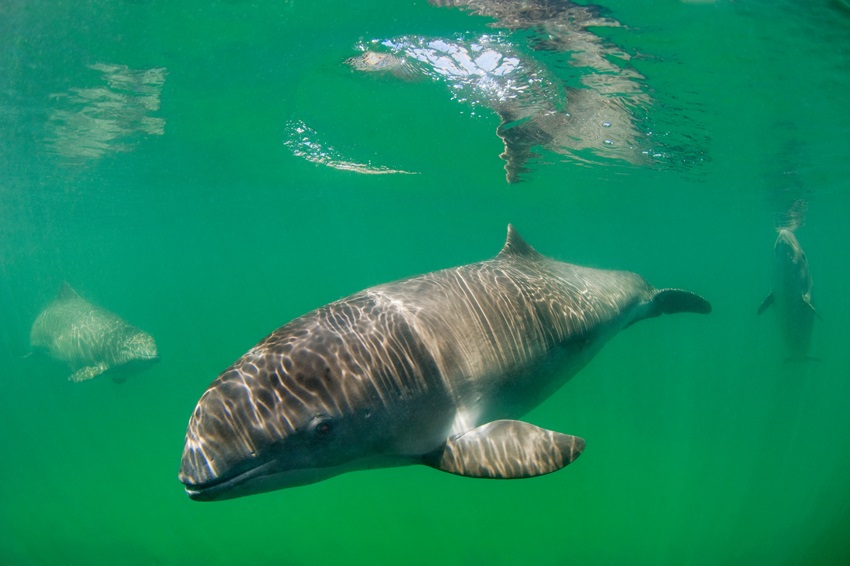
The porpoises' hearing in the wild
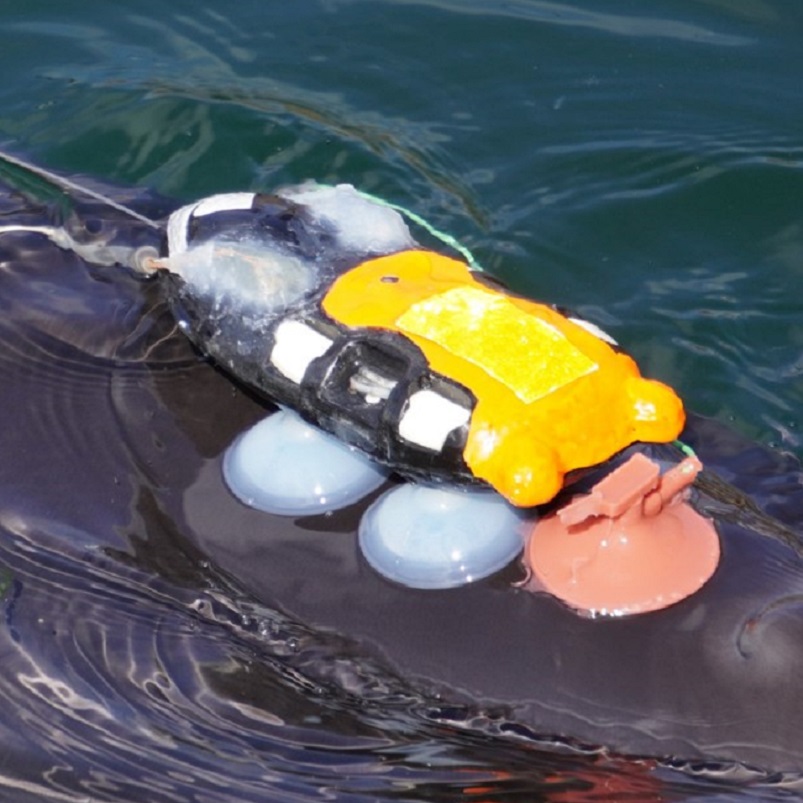
Porpoises and fishing nets
Porpoises in the open water have been observed on Funen's north coast to study how they react to a fishing net. How the behaviour of porpoises is affected by fishing gear has never before been directly examined. The study suggests that porpoises respond to fishing gear at a distance that is much farther than we previously thought, and therefore may be of great importance to how we think we should deal with the bycatch problem.
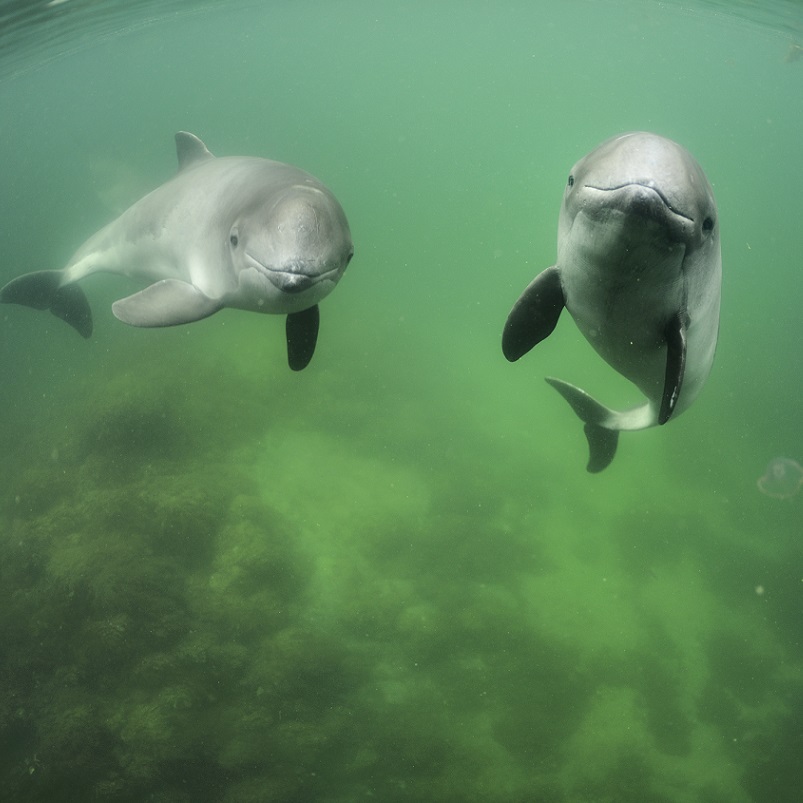
Porpoise echolocation
To better understand how porpoises use sounds to find prey and orient themselves underwater, two studies have been conducted. It has been investigated how the porpoise's hearing works during echolocation and how porpoises use their sonar during active echolocation.
With its sonar, the porpoise can, for example, point out which of two spheres is made of aluminum (the other is made of plastic). And what is most remarkable is that it has special soft cup blinders attached around its eyes so it cannot use its sight in this test.
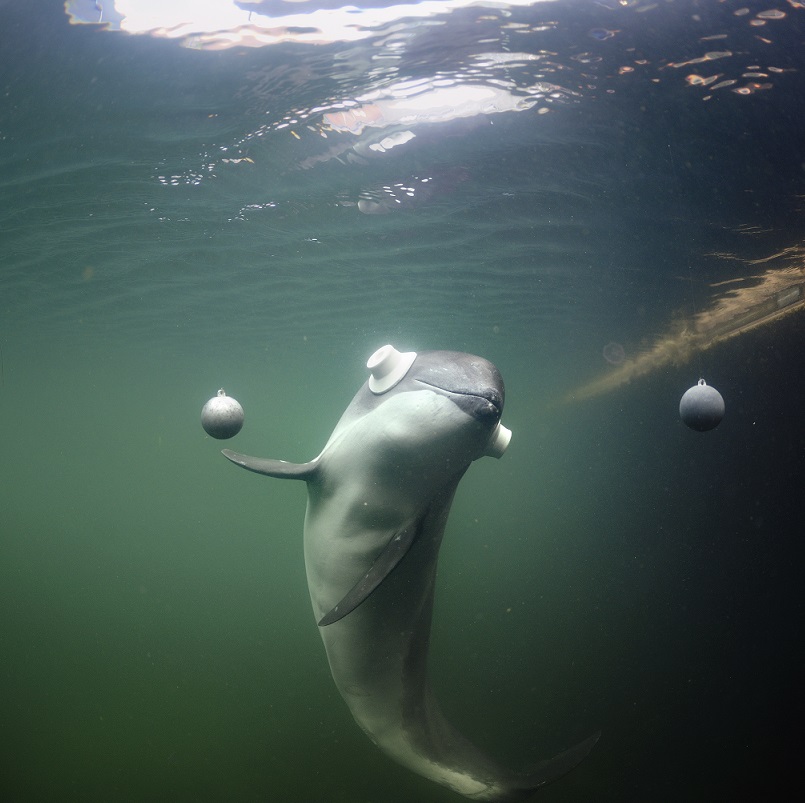
DNA in exhaled air
When a porpoise breathes, not just air comes out through its blowhole. Mucus and other material from the animal are also ejected. Therefore, the exhaled air contains genetic material (DNA) from cells that have followed it from the lungs and airways. Each porpoise has a completely unique set of DNA.
By studying the genetic material, one can find out which porpoises are related to each other, and which populations the different porpoises belong to. This is usually done by taking a blood or fat sample from the animals, which is then analysed.
In the study of a number of whale species, it is not appropriate to take fat samples, and it can sometimes be much easier to obtain samples from the animals' exhaled air. Therefore, it is interesting to know if the air that the whale exhales contains enough DNA material to be able to do the same kind of analysis as you can with a blood or fat sample.
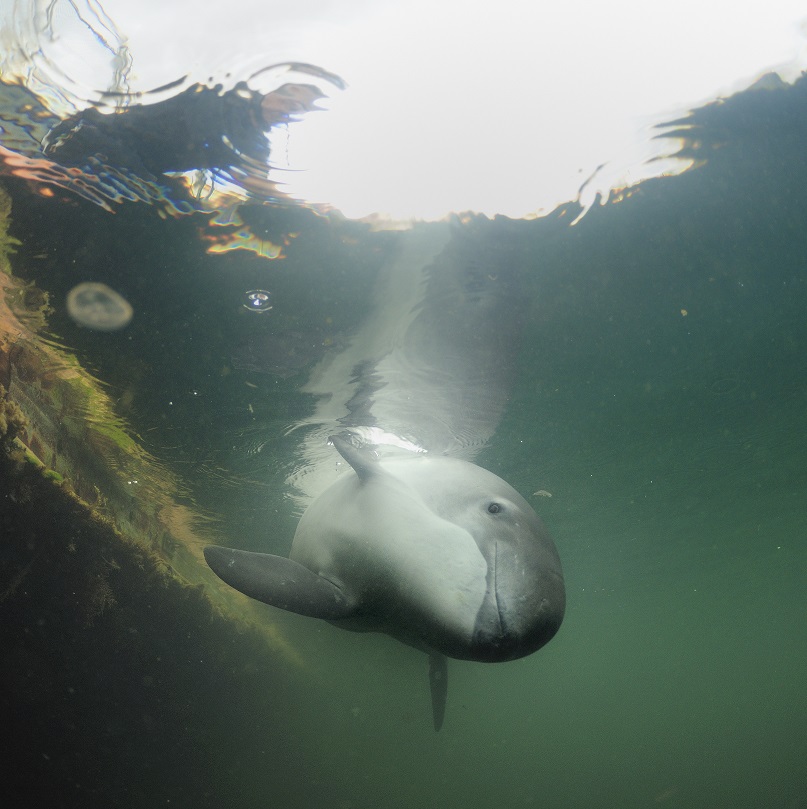
Can one use DNA to count porpoises?
The use of DNA analysis in science is advancing very rapidly. Tiny DNA fragments in bones helped to completely change our understanding of human origin. Now, eDNA (environmental DNA) can be used to find rare and endangered species of fish and other animals in a lake. But can one also use eDNA to find out if there are porpoises in an ocean area? And can one even count the animals using eDNA?
Andrew Foote from the University of Copenhagen's Center for Geogenetics analysed water samples at different distances from the porpoise fence at Fjord&Bælt and inspected the water for porpoise DNA. It turned out that in a small shot glass with seawater, he could identify DNA from porpoises in every third water sample within 10 metres of the fence. Since Foote's article came out in 2012, this technique has been refined so that researchers can now conduct extended field studies to investigate whether eDNA can help us in the management of marine mammals. Read the article here.

Harbour seal
Svante, Fjord&Bælt's harbour seal, can make many different sounds which you can hear during the coaches' presentation of the animals. He roars, strikes his forehead and hindquarters against the water surface, and blows bubbles underwater. All this makes a lot of noise underwater, which can be heard at long distances.
In the summer, male seals make a lot of noises, presumably to attract females and keep other males away. Therefore, these sounds form a kind of song that the males use during mating.
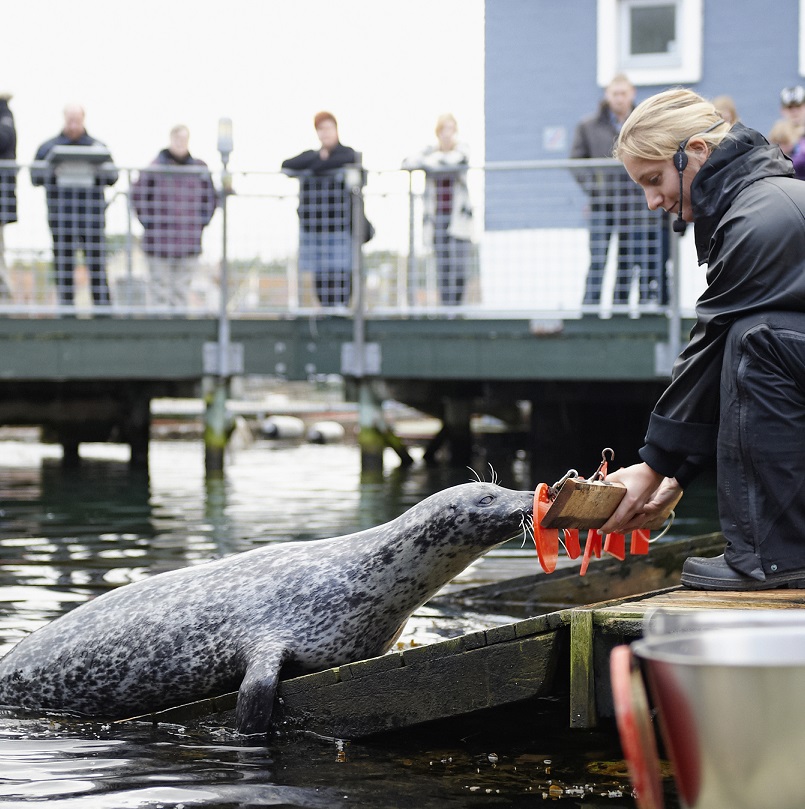
Harbour seal
Studies have been done on the song of the harbor seals across most of their distribution area, but they have never actually been researched in Denmark. From studying other areas, we know that the seal song sounds different in diverse geographical areas.
It is said that the seals have different dialects. Exactly what dialect the Danish seals have is part of Puk Sabinsky's Master's project at Fjord&Bælt and the University of Southern Denmark. She travels around the Danish waters and makes sound recordings which she will later compare with those we know from, for example, Sweden, Norway and Scotland.
